Cook Beef Sirloin Steak Bone in
This post may contain affiliate links. Please read our disclosure policy.
Become an expert at cooking a Perfect Pan-Seared Steak at home! (It's easy!)
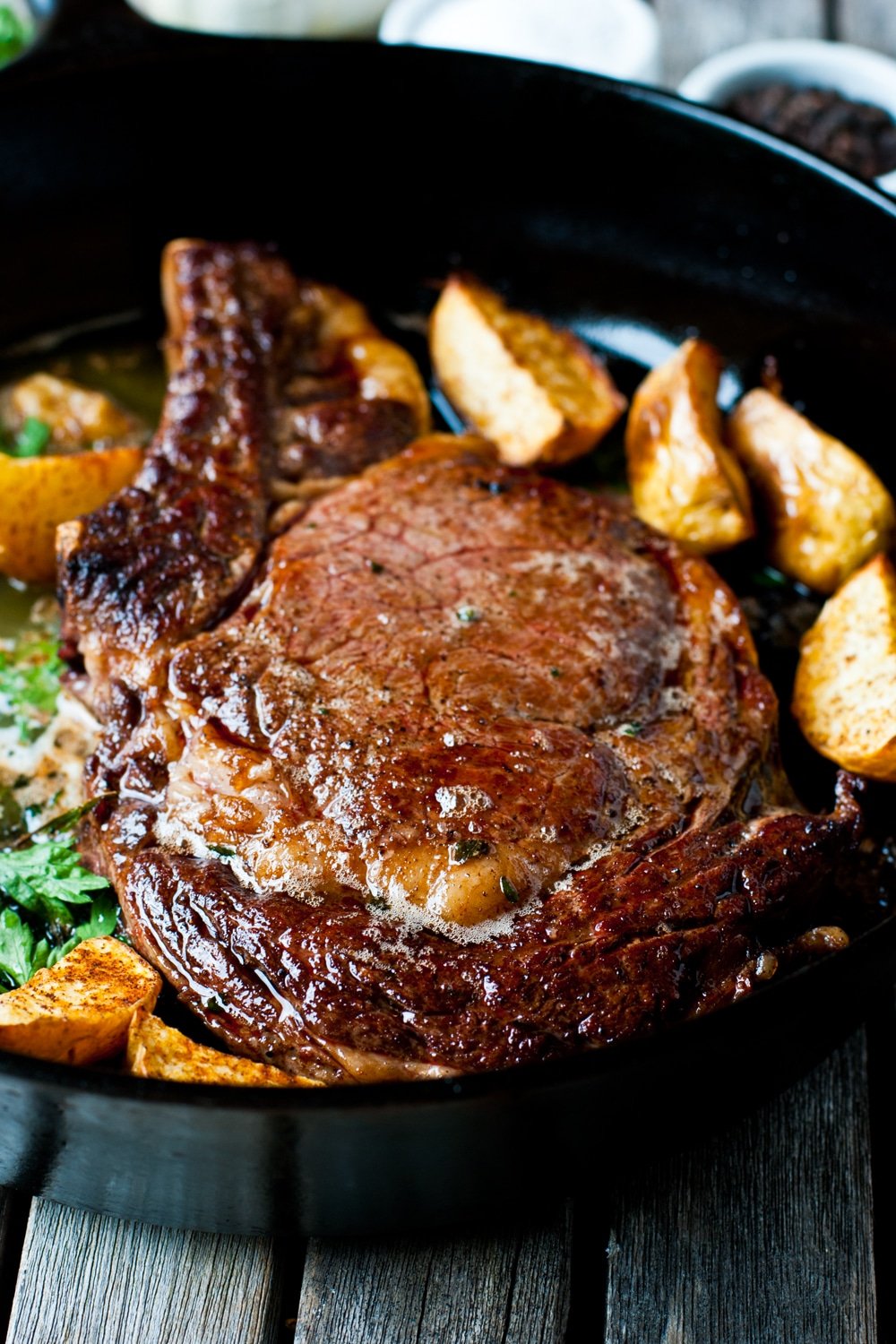
PIN THIS RECIPE NOW!
Confession time…In the past, I always left cooking steak to my husband Jack. I have no problems cooking other kinds of meat, but steaks…I've never been happy with how they came out when I cooked them. Until now…
With today's recipe, cooking the Perfect Pan-Seared steak is so easy, and it comes out so deliciously-good, you'll become an expert at it too! It's cooked entirely in one pan – no need to heat up the oven.
In our opinion, rib-eye steaks are the best because they are both tender and flavorful. Our recipe today works for both bone-in and boneless rib-eye steaks.
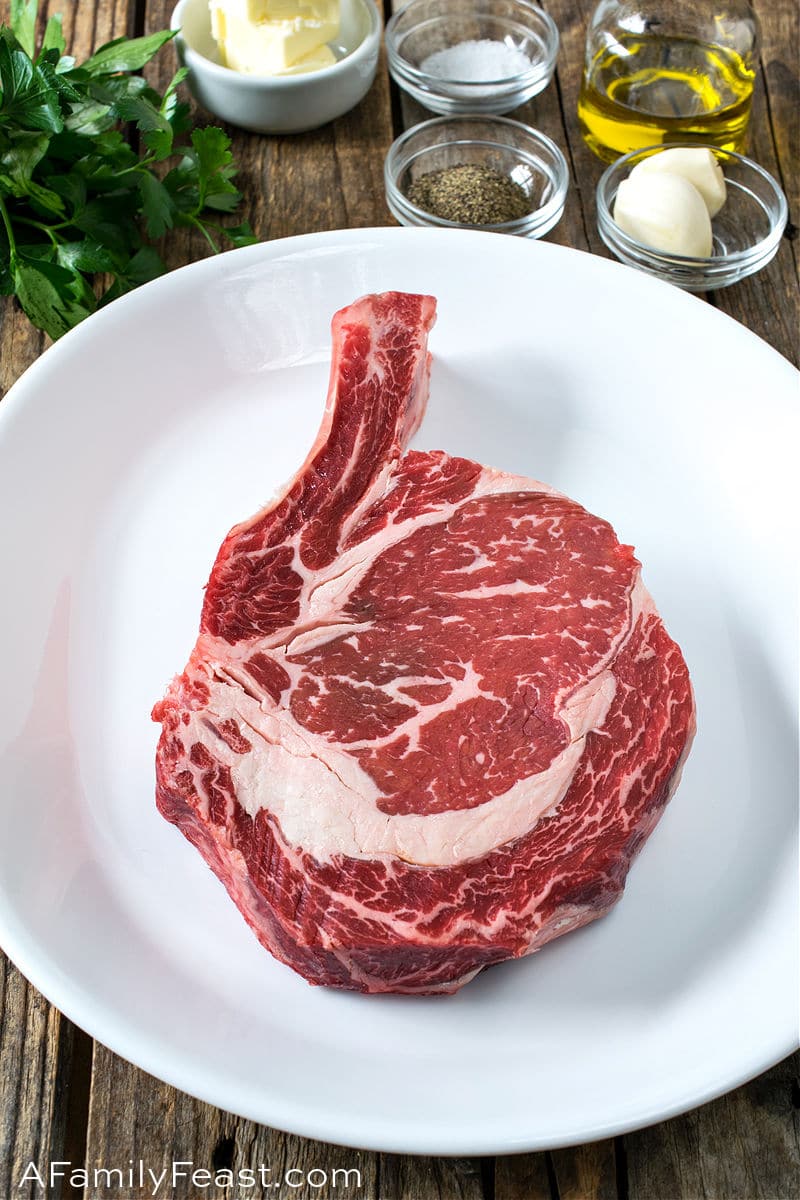
Steak-Buying Tips
Any great recipe depends on great ingredients. Here are a few tips and tricks to help you select the perfect steak for cooking at the supermarket or your local butcher.
Marbling – This term refers to the tiny spider veins of fat that run through the meat. The more marbling your steak has, the more tender and flavorful your steak will be.
In general, you should avoid cuts that have large pieces of fat on the outside, or gristle running through the meat as well. Note that a rib-eye steak – by nature of the cut of beef – will have a line of fat running through the steak. (That's perfectly fine.)
Grades – Beef packages are often labeled with 'grades' and the grade reflects the amount of marbling. From lowest to highest, you'll see beef ranking as Select, Choice, and Prime.
Choice grade beef is the most widely available at supermarkets – and it's a perfectly acceptable option when you want a nice steak at a reasonable price.
Having said that, if your budget allows, choose a hand-cut Prime steak, and/or look for Certified Angus Beef. The flavor will be even more delicious!
Cut – The cut of beef you choose will also impact the tenderness and flavor of your cooked steak.
As you can tell, we are big fans of rib-eye steaks. It comes from the upper rib primal section of the steer, falling between the shoulder and the loin. It's well-marbled with flavorful fat, plus it comes from one of the more tender parts of the cow. It's ideally suited for fast-cooking, high-heat methods such as our pan-seared steak recipe today.
Thickness – We recommend a steak that is at least 1 – 1½ inches thick. This thickness allows you to get a nice sear on the outside, while still retaining the ability to cook the inside to your preferred level of doneness. (Note that the recipe below is written for this thickness; if you buy a thicker cut, the cooking time will be longer. If you buy a thinner cut, the cooking time will be less and you will run the risk of overcooking the steak.)
PIN THIS RECIPE NOW!
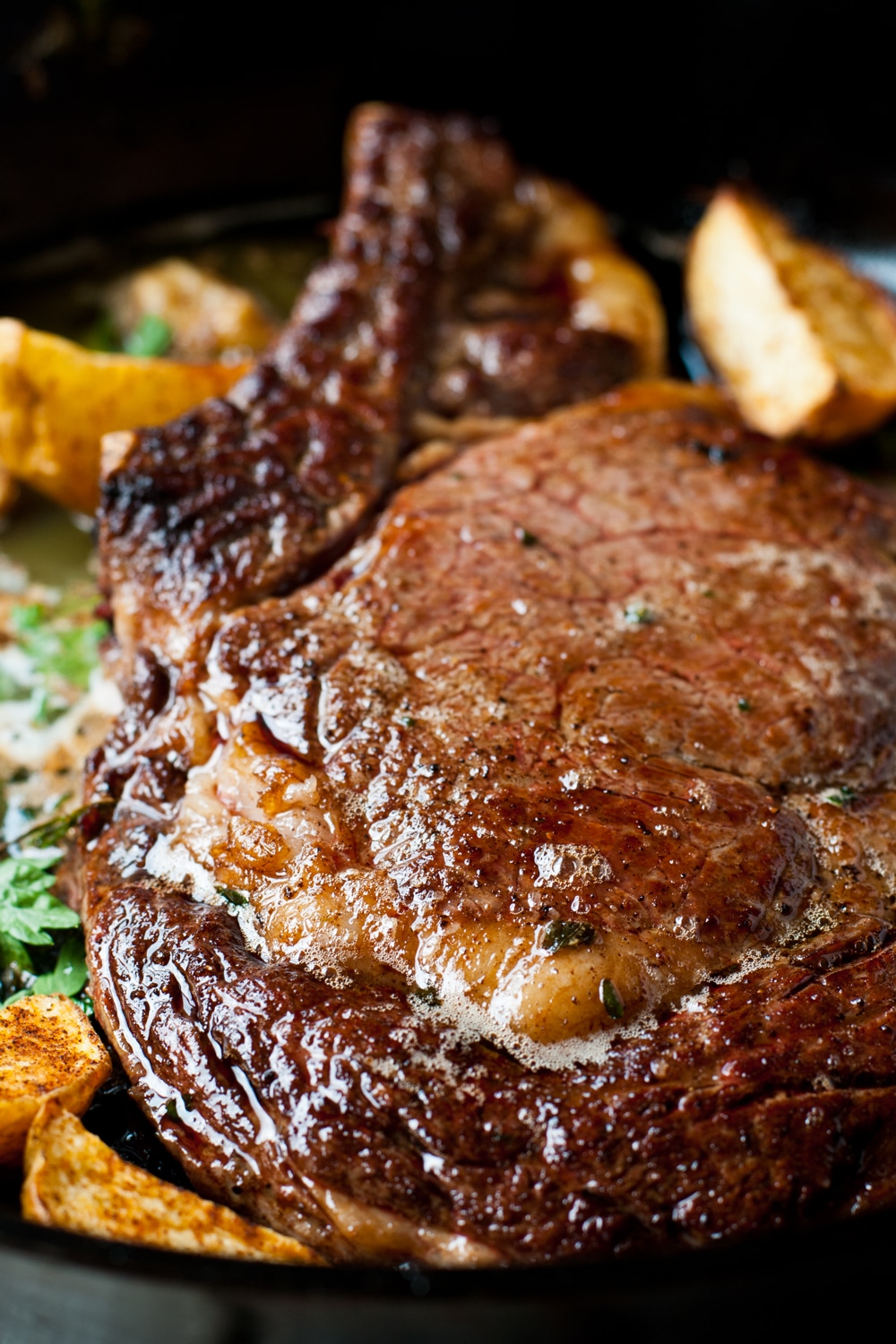
Get Expert Advice – Visit your local butcher!
They are glad to help you choose the perfect cut based on your recipe and budget. If you don't have a local butcher, try asking the meat counter associate at the supermarket to help you find the perfect cut. If you can't find help, at the very least, look for 'choice' grade cuts of meat.
Chef's Tip – When you get the steak home, remove it from the package and place it in your refrigerator, uncovered, on a plate lined with a few paper towels until you are ready to prepare it. This will help remove any excess moisture and will also help intensify the flavor of your steak.
Key Ingredients and Substitutions
- Rib-Eye Steaks – Choice grade or Prime, and/or Certified Angus Beef. One to 1 ½-inches thick.
- Seasonings – Salt and pepper (keep it simple)
- Olive oil and butter – Use a combination of the two to avoid burning and to add flavor. Either salted or unsalted butter is fine.
- Fresh Parsley and Fresh Garlic – to add extra flavor to the pan juices.
- Optional: Wine and stock (chicken, beef, vegetable) plus more butter – To create a simple pan sauce after the steak has cooked.
- Optional: Roasted Potato Wedges – Add to the pan before serving, to soak up the juices.
- Optional: Make our popular Steak Butter recipe to serve on top of your steak.
Special Supplies
- Cast Iron Skillet
- Tongs, for flipping the steaks
- Instant-Read Probe Thermometer
- Large spoon, for basting
- Aluminum foil, for covering the steak while resting
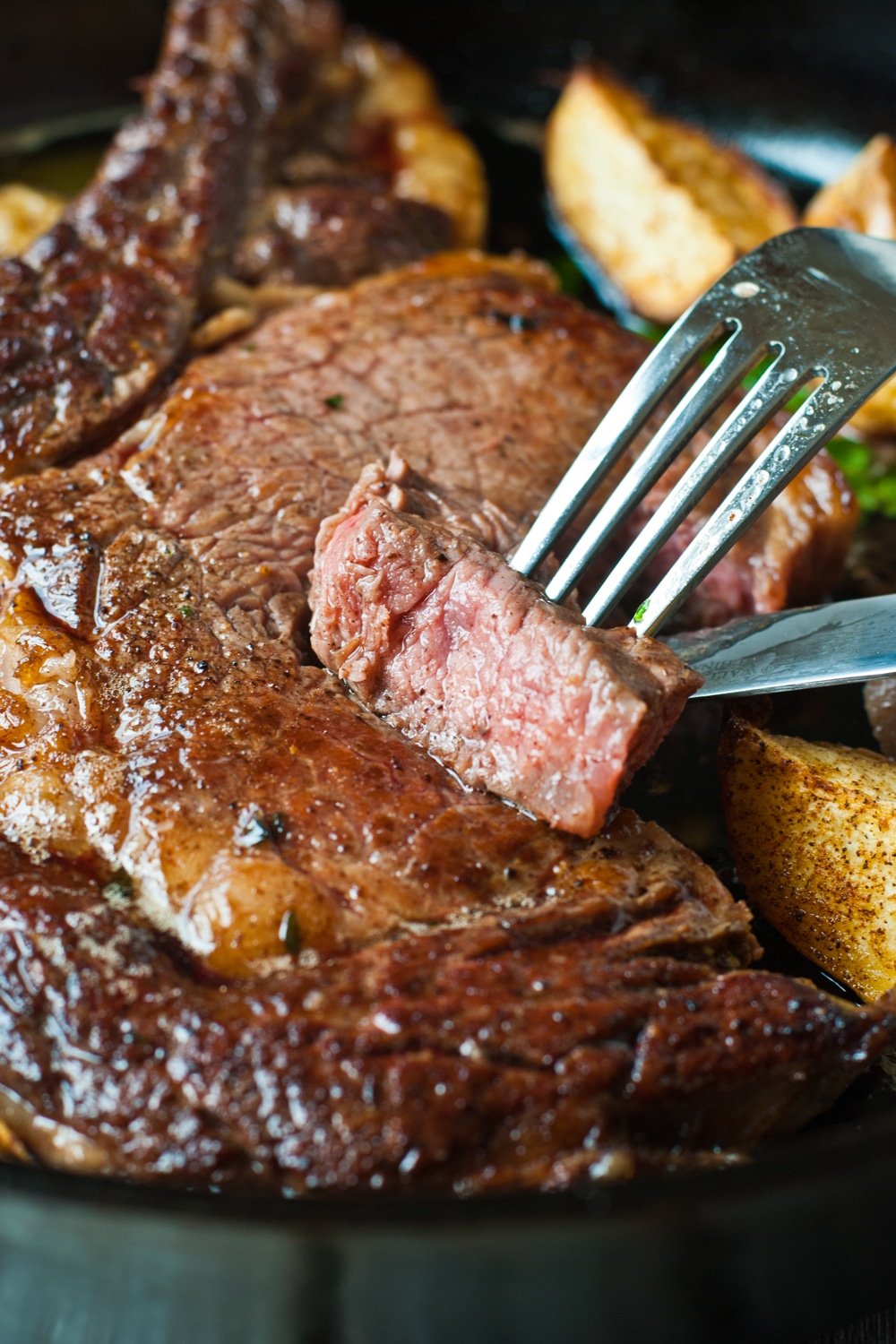
PIN THIS RECIPE NOW!
Watch this video to learn how to make the perfect pan-seared rib-eye steak, served with our fantastic Steak Butter:
How to make Perfect Pan-Seared Steak
- Place the steak on a plate lined with a paper towel and let sit at room temperature for 30 minutes.
- Season one side of the steak with salt and pepper.
- Heat the skillet to smoking hot. Swirl olive oil around the pan, then place the steak seasoned-side down in the skillet. Season the other side of the steak (now facing up) with salt and pepper.
- After two minutes, flip the steak with tongs and add butter, garlic and fresh parsley to the pan.
- Flip the rib-eye again after two minutes and baste with melted butter.
- Continue flipping and basting the steak until cooked to your preferred level of doneness. (Use an instant-read probe thermometer or the poke test to tell when it's done.)
- Remove the steak to a cutting board and cover with foil to rest.
- Slice steak on the bias to serve slices, or simply cut the steak in half to serve. (Or if you are hungry – serve it whole!)
- Make a pan sauce with the drippings if you'd like, or toss in oven-roasted potato wedges to soak up the juices.
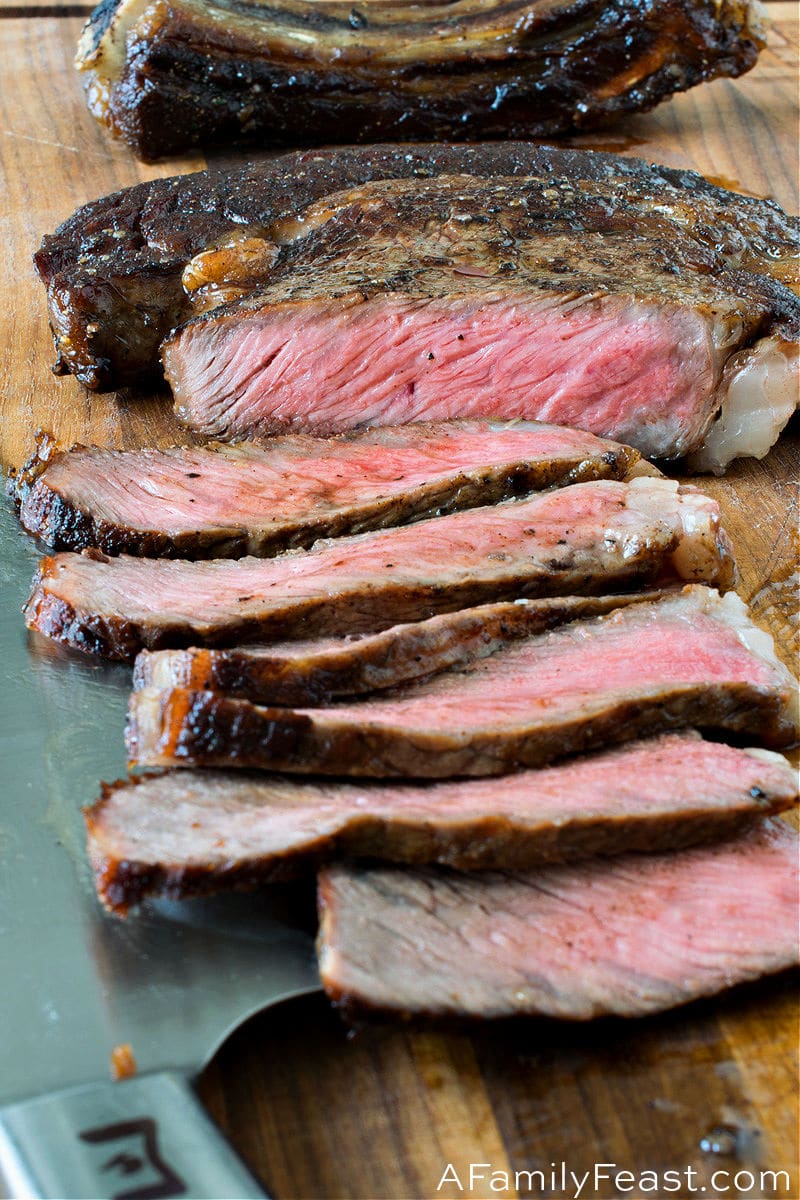
This post originally appeared on A Family Feast in October 2013.
You may like these other Steak recipes:
- Pan-Seared Sirloin Steak
- Grilled Tri-Tip Steak
- Steak Au Poivre
- Steak Tips with Caramelized Onions
- Steak Bomb Sandwich
Ingredients
1 bone-in or boneless rib eye steak or sirloin steak at least 1 – 1 1/2 pounds, cut to 1 1/2 inches or thinner. (Any thicker will require some time in the oven)
1 teaspoon kosher salt
1/2 teaspoon freshly ground black pepper
2 teaspoons extra-virgin olive oil
3 tablespoons butter
2 peeled garlic cloves, left whole
Few sprigs fresh parsley, including stems
Optional: Wine and stock (chicken, beef, veal,etc.) and butter for deglazing the pan and making a delicious pan sauce
Optional: Roasted potato wedges (Shown in the photos, added to the pan after cooking)
- Place steak on a plate lined with a paper towel to absorb some of the liquid and let sit at room temperature for 30 minutes.
- Using half the amount of salt and pepper season one side of the steak.
- Heat your seasoned cast iron skillet to smoking hot (have hood fan on high). Add oil and swirl around to coat. (Normally olive oil would burn at such a high heat but when mixed with butter on the next step, it will not burn and adds flavor). Add steak seasoned-side down (place it in pan away from you so you don't get splattered), and then salt and pepper the other side of the steak. At this point do not touch it for two minutes. Using tongs (never pierce the meat with a fork), flip the steak and add butter, garlic and parsley to the pan next to the steak. Allow the steak to cook for 2 more minutes.
- Right after you flip the steak for the first time, with a spoon or small ladle, keep basting the melted butter over the steak. Baste continually for the full two minutes (tilt pan a little if you have to, to get the butter onto the spoon).
- After two minutes on each side, keep flipping and basting the steak each time, leaving the steak for 30 seconds before turning again. Test the steak with the poke test (see note below) and remove at medium rare at about the five to six minute mark of total cooking time. Cook a minute or two longer for medium to well. A thicker steak (such as a sirloin) may take longer.
- If you are not comfortable with the poke test and want to use a probe thermometer, hold the steak sideways with tongs and insert the probe from the side. Turn burner off at 110 degrees F and let the steak sit in the pan for five minutes. The carry over heat will continue to cook the steak (be careful if your steak is thin, this step may take less than five minutes). Baste one more time and remove to a platter and loosely cover with foil for five more minutes to allow juices to work back into the meat.
- Remove to a cutting board and either cut the steak in half for each serving or for a nicer presentation, slice on the bias and serve slices.
- Discard the pan drippings or if desired, deglaze the pan with a little wine, then add stock and simmer for a few minutes to reduce the drippings. Add a tablespoon or two of butter to thicken for a nice pan sauce .
Last Step! Please leave a review and rating letting us know how you liked this recipe! This helps our business thrive & continue providing free recipes.
Notes
Note: To test the meat for doneness, we use what is called the 'poke test'. Make a tight fist and feel the flesh just below your thumb into the palm of your hand. Firm is how well-done steak will feel. Loosen your grip a bit and feel the same spot. That will be medium-rare. Loosen your grip all the way and that is blood-rare. Now poke your finger into the thickest part of the meat and compare it to your palm for the perfect level of doneness that you desire.
PIN THIS RECIPE NOW!
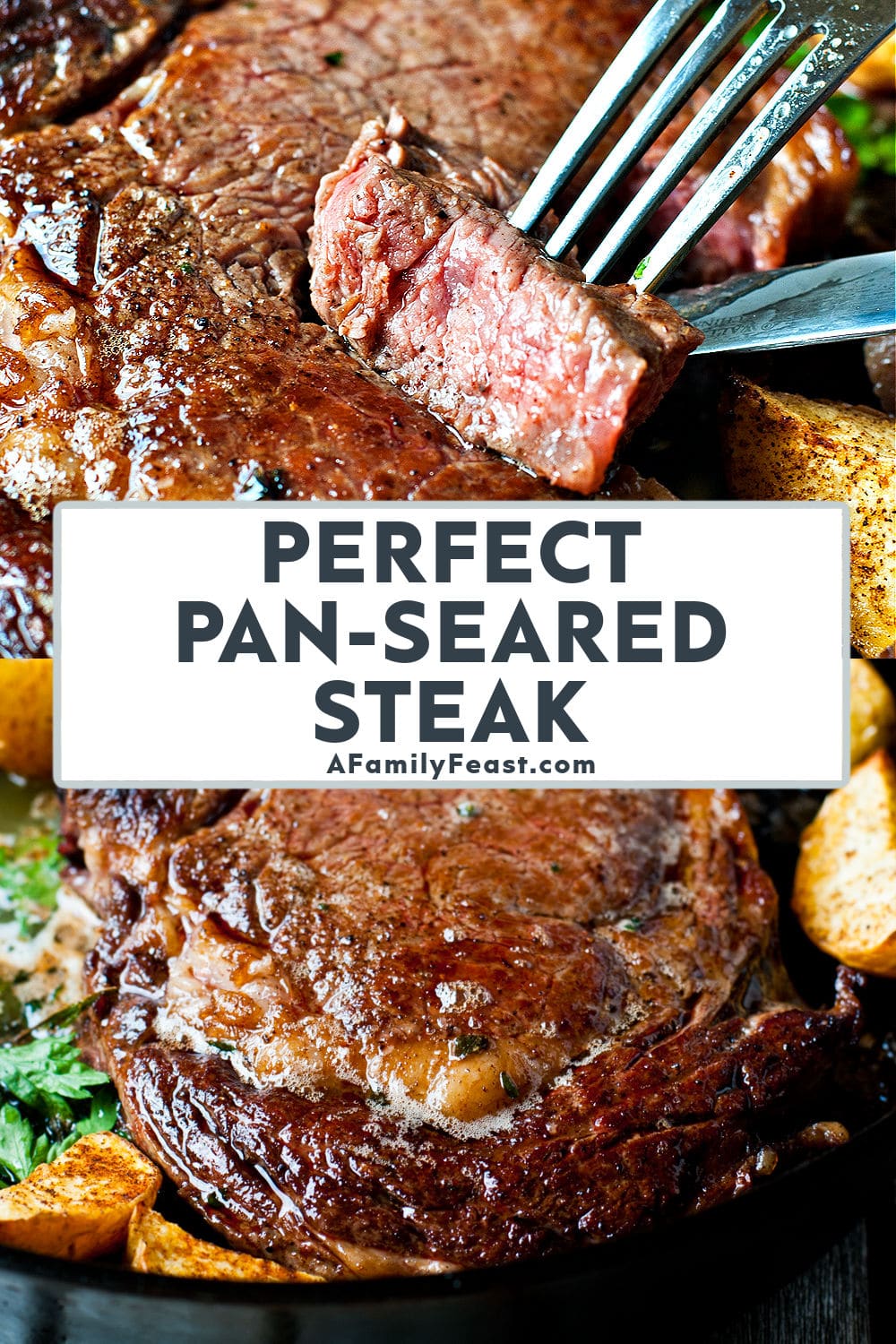
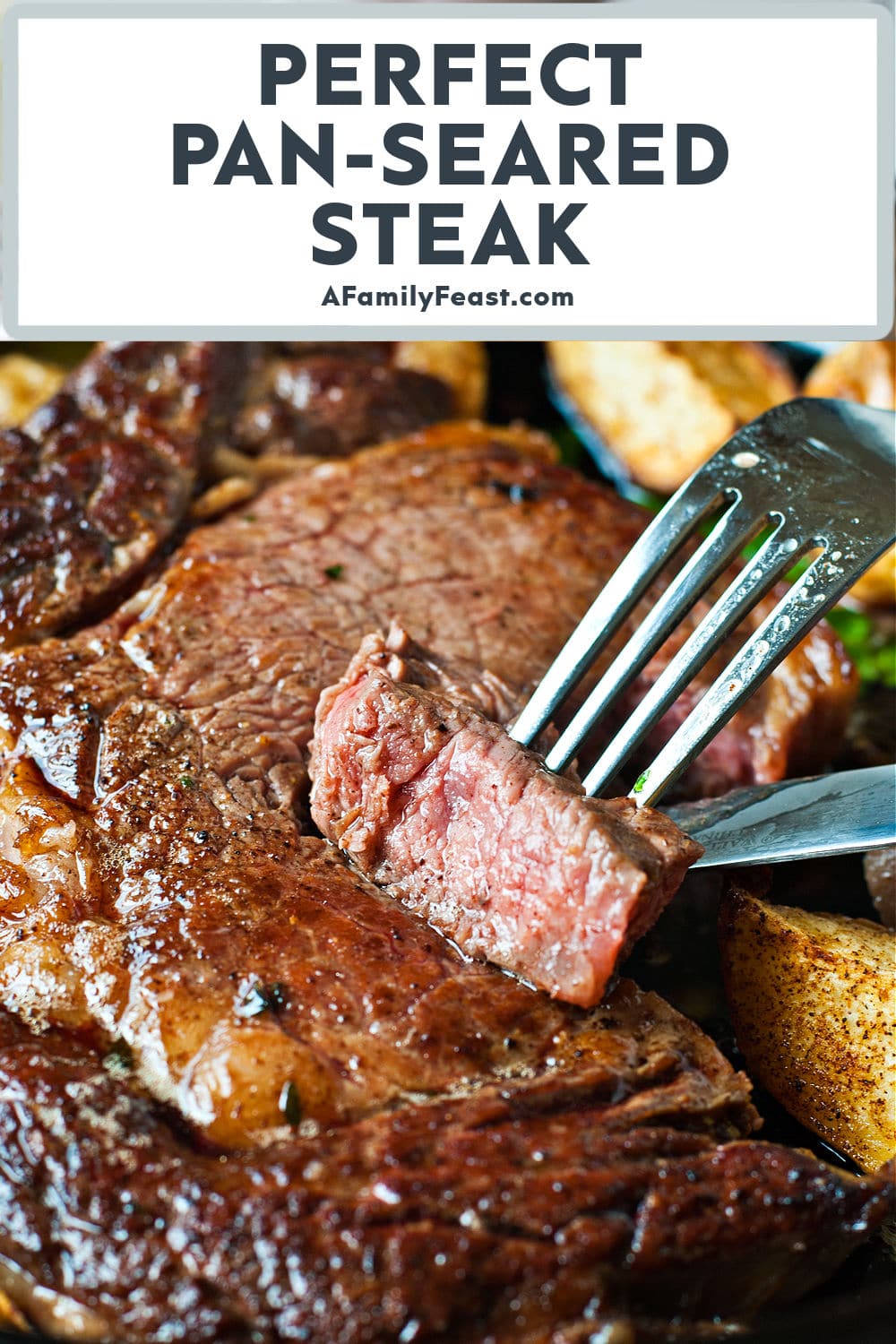
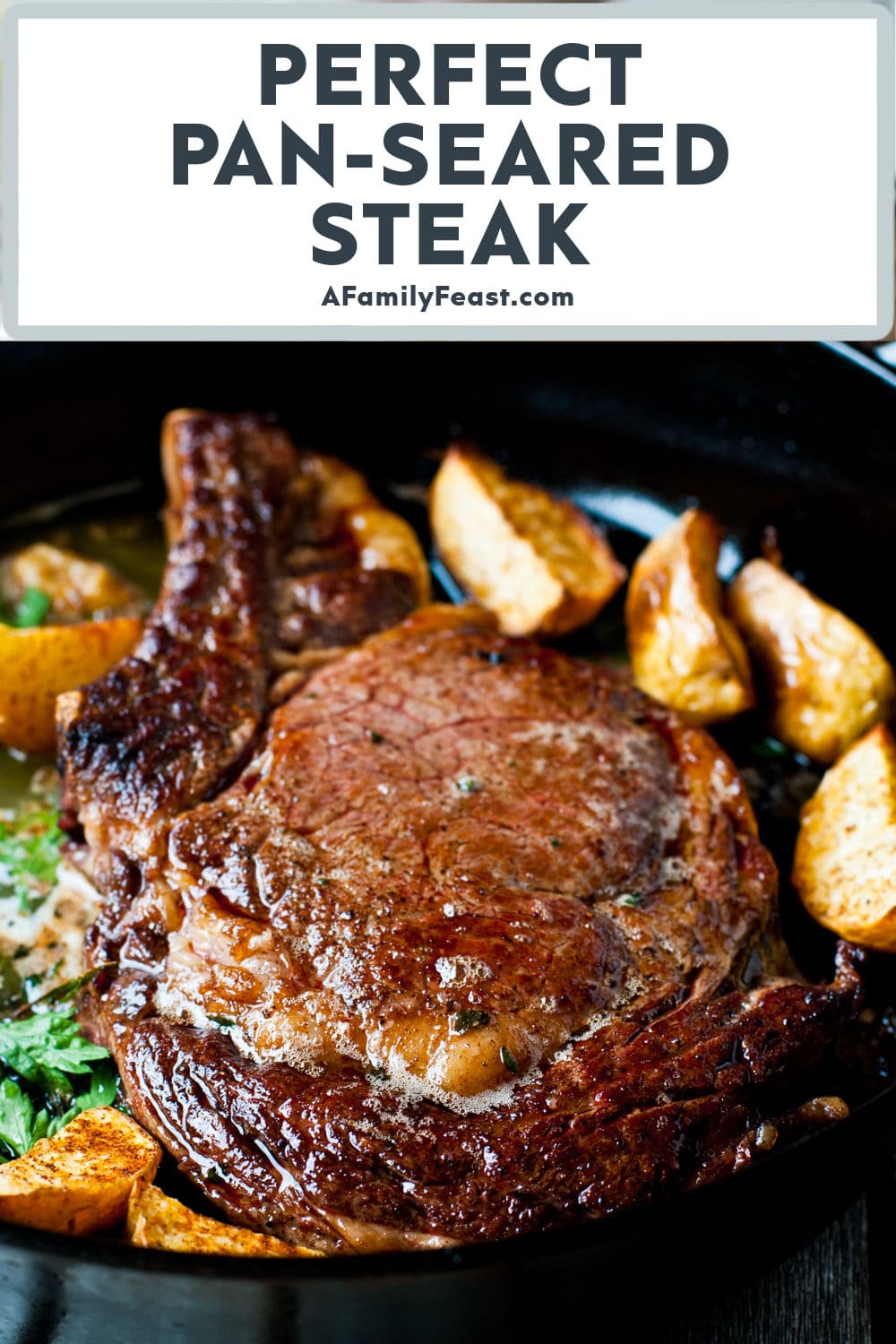
Source: https://www.afamilyfeast.com/perfect-pan-seared-steak/
0 Response to "Cook Beef Sirloin Steak Bone in"
Post a Comment